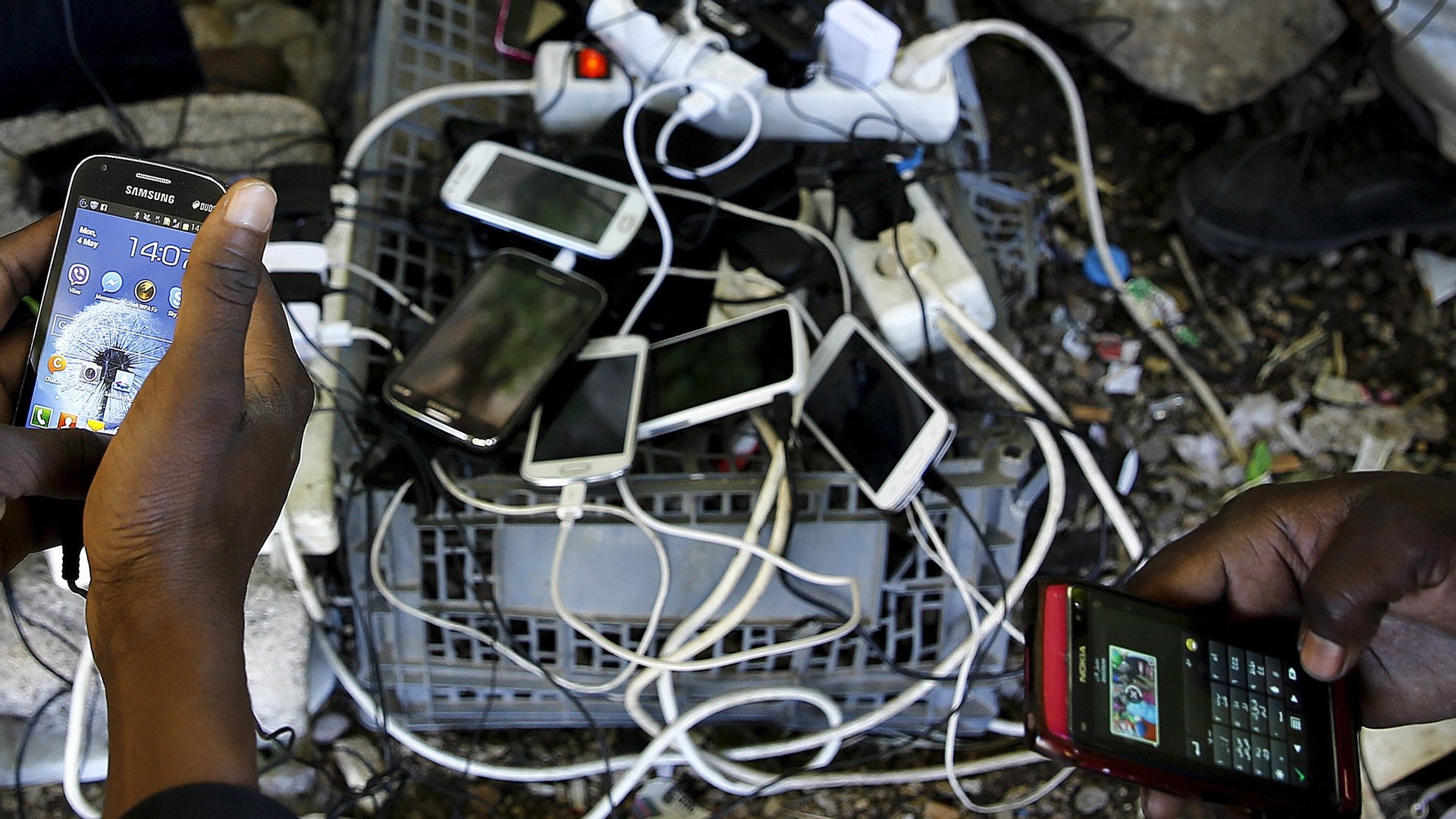Africa’s smartphone market is on the rise as affordable handsets spur growth
As Africa closes in on 1 billion mobile subscriptions, affordable smartphones are contributing significantly in bringing more people online across the continent.


As Africa closes in on 1 billion mobile subscriptions, affordable smartphones are contributing significantly in bringing more people online across the continent.
By 2019, feature phones will only account for 27% of Africa’s mobile handset market, as the market for smartphones–fueled by handsets priced under $100 per unit–continues to grow. A recent report by global technology consulting firm, International Data Corporation (IDC), predicts smartphone shipments will top 155 million units by the end of 2015 in the Middle East and Africa–after increasing by 66% during the first quarter of 2015.
On the other hand, feature phones have had a tough time as they have suffered year-on-year decline of 20% in both the Middle East and in Africa.
Statista, the market and industry data platform, forecasts growth of both Africa and the Middle East’s smartphone markets, versus the shrinking feature phone market from 2008-2020. While the forecast is more conservative than the IDC’s prediction for 2015, the overall trend is consistent: smartphones are becoming popular and shipments will increase year-on-year as the market for feature phones shrinks.
Google’s Android is spurring the growth of Africa’s smartphone market by offering cheap smartphones. The IDC report notes that 89% of all smartphones shipped during the first quarter of 2015 were powered by Android. 45.1% of those were priced below $100. Affordable smartphones with added features–under $100–are gaining traction in emerging markets, as device manufacturers seek win market share.
To feed off the growth of Africa’s smartphone market, many African mobile operators have formed partnerships with device manufacturers to make lower-priced smartphones–coupled with voice and data bundles–widely available. Kenya’s Safaricom is one example–the popular mobile operator began its cheap smartphone strategy in 2011 with the launch of the Huawei Ideos, an Android phone that was sold at $100.
After tasting early success from the experiment–with the initial stock being sold-out within two weeks–Safaricom went on to partner with Microsoft to launch the 4Afrika smartphone, as well as Intel to launch the popular low-cost smartphone, Yolo by Intel, which sold 5000 units within two weeks of its launch.
Earlier this year, Opera Media Works–the company behind the popular mobile web browser, OperaMini–argued that affordable smartphones are taking the place that was previously occupied by feature phones. This “substitution effect” has seen the emergence of cheaper smartphones that provide users with access to Internet connectivity and other basic features, in the same way that feature phones provided basic mobile connectivity to first-time and low-income users when they first rose to popularity.